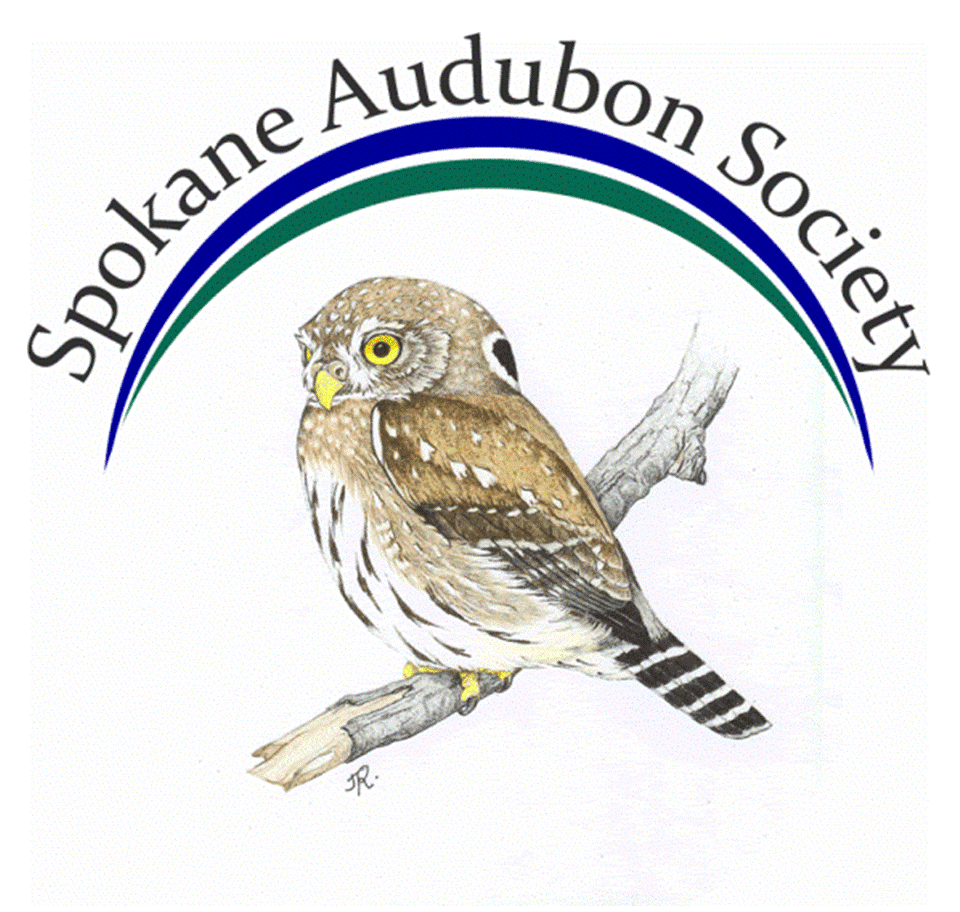Peggy O’Connell
Peggy O’Connell
by Madonna Luers
When Dr. Peggy O’Connell retired in 2022 from Eastern Washington University -- where for 31 years she taught vertebrate, conservation, and wildlife management courses, conducted research on wildlife habitat relationships, mentored student research, and for eight years served as biology department chair -- she joined Spokane Audubon Society (SAS).
She had participated in the Cheney Christmas Bird Count since 2018, but until retirement she didn’t have the time to do much more. “Spokane Audubon was my first local choice to contribute more to,” she said, “because I strongly support its mission of ‘advocating for birds and their habitats in the Inland Northwest and connecting people with nature’”. Since last year she and her fellow birder husband Jim Hallett help with monitoring the chapter’s new Kestrel Nest Box Project, and last month Peggy was nominated and elected to the SAS board of directors. She says she wants to “listen and learn to find out where I can be of most help given my abilities.”
Peggy was born in 1951 and grew up in Chappaqua, New York, a small town in Westchester County just north of New York City. She spent much of her childhood outside and recalls always being “aware” of birds, but she didn’t really get into birds until college birdwatching outings with friends.
She received a BA degree in Spanish and Biology from Prescott College in Prescott, Arizona. She earned her MS in Zoology and a PhD in Biology from Texas Tech University in Lubbock, Texas. Her PhD research on small mammal ecology in tropical forests and savannahs of Venezuela was supported by a fellowship from the Smithsonian Institution.
“During years of field research on mammals in different habitats -- including southwest deserts, tropical forests and savannahs, deciduous forests of the northeast, and multiple habitat types in the Pacific Northwest -- I learned a variety of birds,” she said. “But I have never considered myself a ‘bird lister’. Indeed, when a friend learned I’d be teaching Ornithology at EWU, she laughed and gave me a copy of an article titled ‘Birding with a Tin Ear!’ But helping students learn to identify and love birds strengthened my abilities and made me even more of a bird enthusiast.”
A Washington resident since 1984 when she started non-tenure track teaching at Lewis Clark State College and Washington State University, Peggy has lived in Venezuela, Virginia, California, and Washington D.C., in addition to her childhood and education years in New York, Arizona, and Texas. She travels to see birds, often in conjunction with trips to see family or attend scientific meetings, including Ecuador’s Galapagos, Colombia, Argentina, Australia, Spain, Nebraska’s Platte River, Arizona’s Grand Canyon and Chiricahua Mountains, and Texas’ Guadalupe Mountains and Big Bend.
She has lots of favorite birding experiences, but trips to the Platte River in Nebraska for the spring migration of the Sandhill Cranes are especially memorable. “Our best friends from graduate school have gone almost every year for 50 years and delight in sharing the experience with others,” she said. “And such an experience it is - watching and hearing hundreds of birds fly in at evening across a full moon and then getting up before dawn to be in the blind before sunrise to watch the sun come up on hundreds of birds displaying right in front of you!”
A wood carver friend asked her favorite bird and after some thought she answered “American Woodcock.” That came to her with the memory of Jim and her both seeing their first American Woodcock on a walk in the woods in Virginia during an early spring snowstorm. “Later that day we decided to get married,” she said. “When our daughter Lauren was born, the birth announcement had a print of an American Woodcock carrying its chick. The carving my friend made of a woodcock carrying its chick is spectacular.”
Peggy believes more young people could become interested in birding if adult birders share fun times outside with them while noting different birds. “I probably quizzed my daughter too much about what bird she was seeing,” she recalls, “because now, in her late 30’s, she says she didn’t like birding as a kid, although she does now.” Peggy got kid’s binoculars for her first of now two grandsons and one of his favorite books is about chickadees. “At two he could point to the range maps in the book and tell me which chickadee,” she said proudly.
Peggy’s tip for new birdwatchers is to think about an already-familiar bird like an American Robin and the ways it’s recognized -- its shape, size, color, behavior, song. “Every time you see a bird you know, review these features in your mind, focusing on the key ones you use,” she said. “Then start on birds you don’t know. Online apps, such as Merlin, or an Audubon bird outing, are great ways to identify new birds. For each one think about key identifying characteristics to develop your search image. If you are musically-challenged like me, bird mnemonics – like ‘cheeseburger’ for the sound chickadees make -- can really help you learn calls. Be sure to pay attention to each species geographic range, habitat, and time of year it is likely to be present where you are – something that those online apps make much easier. “
Peggy believes habitat loss and degradation, due to our direct or indirect actions, are a major cause of declines in bird populations. “We need to do everything we can to protect habitat for birds and other wildlife through our personal actions, education of others, advocacy at all levels, and support of those who promote habitat protection,” she said.







